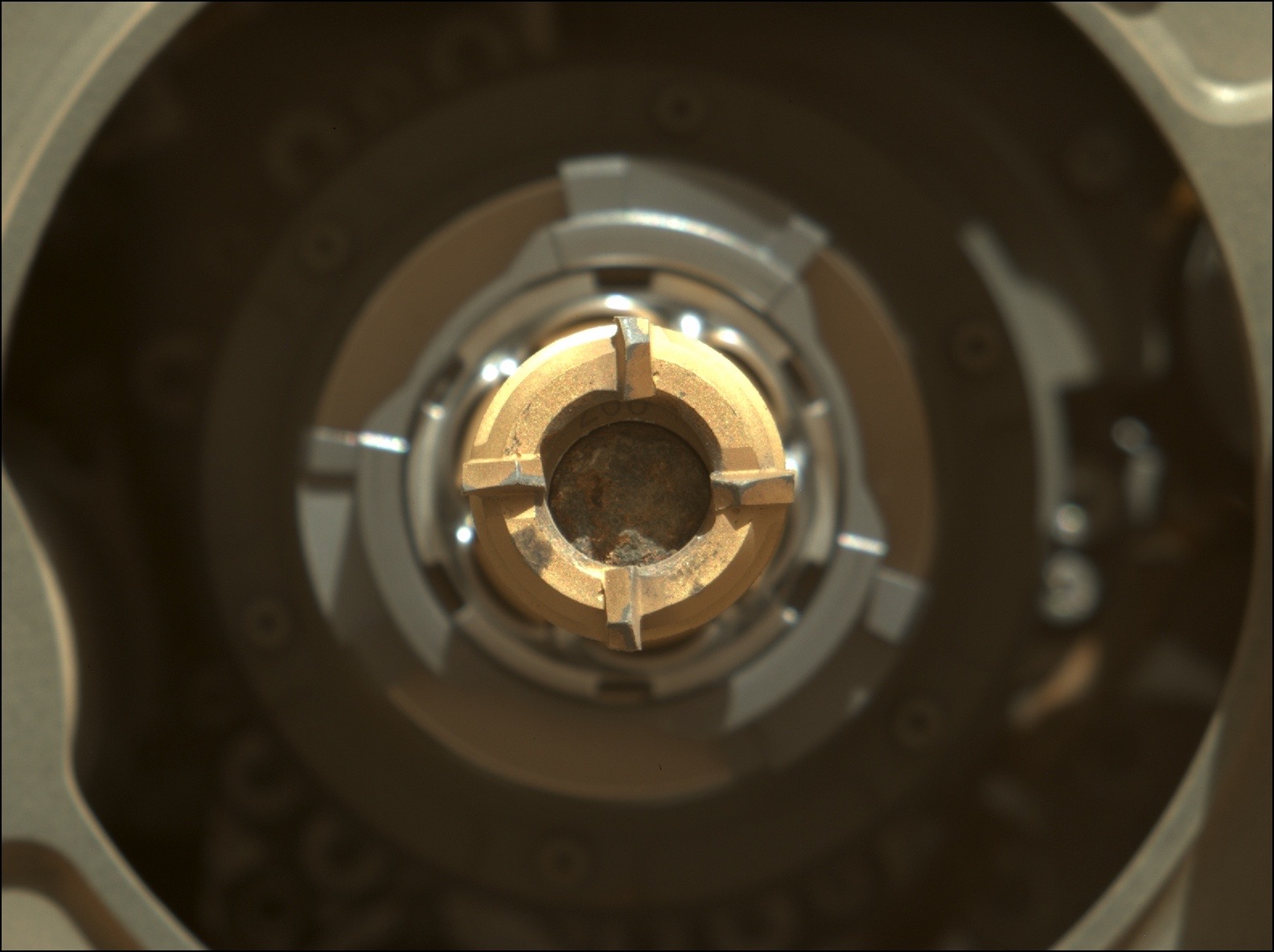Perseverance rover seals up 1st Mars sample for future return to Earth

It's official: NASA's Perseverance rover has collected its first-ever Mars sample.
The car-sized rover sealed a titanium tube containing a drilled-out core of a Red Planet rock on Monday (Sept. 6), marking a big milestone for its ambitious mission. If all goes according to plan, Perseverance will collect several dozen more such samples, all of which will be hauled to Earth for analysis a decade or so from now.
"For all of NASA science, this is truly a historic moment," Thomas Zurbuchen, the head of NASA's Science Mission Directorate, said in a statement on Monday.
"Just as the Apollo moon missions demonstrated the enduring scientific value of returning samples from other worlds for analysis here on our planet, we will be doing the same with the samples Perseverance collects as part of our Mars Sample Return program," Zurbuchen said. "Using the most sophisticated science instruments on Earth, we expect jaw-dropping discoveries across a broad set of science areas, including exploration into the question of whether life once existed on Mars."
Related: Where to find the latest Mars photos from NASA's Perseverance rover
Perseverance touched down on Feb. 18 inside the Red Planet's Jezero Crater, which harbored a river delta and a lake billions of years ago. The rover is hunting for signs of ancient Mars life and collecting up to 43 pristine samples, which will be brought to Earth by a joint NASA-European Space Agency campaign, perhaps as early as 2031.
The first of those samples — a cylinder 0.5 inches wide by 2.4 inches long (1.3 by 6 centimeters) taken from a rock dubbed "Rochette" — is now safely socked away. The achievement was hard-won. For example, Perseverance first tried to snag a rock core on Aug. 5, but the rock it drilled turned out to be exceedingly crumbly, falling to bits that failed to make it into the tube.
Breaking space news, the latest updates on rocket launches, skywatching events and more!
Perseverance then rolled to a new site, a craggy ridge called "Citadelle" (French for "castle"). The mission team homed in on Rochette as a target, and, after some in-depth assessment, Perseverance bored into the rock with its percussive drill on Sept. 1. Photos the rover snapped soon afterward showed a sample in the tube as planned, but it was not visible in other images captured a bit later.
Team members suspected that the sample was still there but was simply hidden in shadow, which swallowed up much of the tube in the later photos. So they had Perseverance take additional pictures on Friday (Sept. 3) under better lighting conditions.
The rover beamed those photos to Earth on Saturday (Sept. 4), and they confirmed that the sample was indeed still in the tube, which bears the numeric designation 266. So, at 12:34 a.m. EDT (0434 GMT) on Monday, Perseverance transferred the tube into its interior, measured and (yet again) imaged the sample, and hermetically sealed the tube, NASA officials said.
This was a big moment for mission team members, but they don't plan to rest on their laurels.
"Getting the first sample under our belt is a huge milestone," Perseverance project scientist Ken Farley, of the California Institute of Technology in Pasadena, said in the same statement.
"When we get these samples back on Earth, they are going to tell us a great deal about some of the earliest chapters in the evolution of Mars," Farley said. "But however geologically intriguing the contents of sample tube 266 will be, they won't tell the complete story of this place. There is a lot of Jezero Crater left to explore, and we will continue our journey in the months and years ahead."
Saturday was a big day for both Perseverance and Ingenuity, the 4-pound (1.8 kilograms) helicopter that traveled to Mars on the rover's belly. On Saturday, Ingenuity performed its 13th Red Planet flight, continuing to scout a part of Jezero's floor known as South Séítah for the Perseverance team.
Mike Wall is the author of "Out There" (Grand Central Publishing, 2018; illustrated by Karl Tate), a book about the search for alien life. Follow him on Twitter @michaeldwall. Follow us on Twitter @Spacedotcom or Facebook.

Michael Wall is a Senior Space Writer with Space.com and joined the team in 2010. He primarily covers exoplanets, spaceflight and military space, but has been known to dabble in the space art beat. His book about the search for alien life, "Out There," was published on Nov. 13, 2018. Before becoming a science writer, Michael worked as a herpetologist and wildlife biologist. He has a Ph.D. in evolutionary biology from the University of Sydney, Australia, a bachelor's degree from the University of Arizona, and a graduate certificate in science writing from the University of California, Santa Cruz. To find out what his latest project is, you can follow Michael on Twitter.

